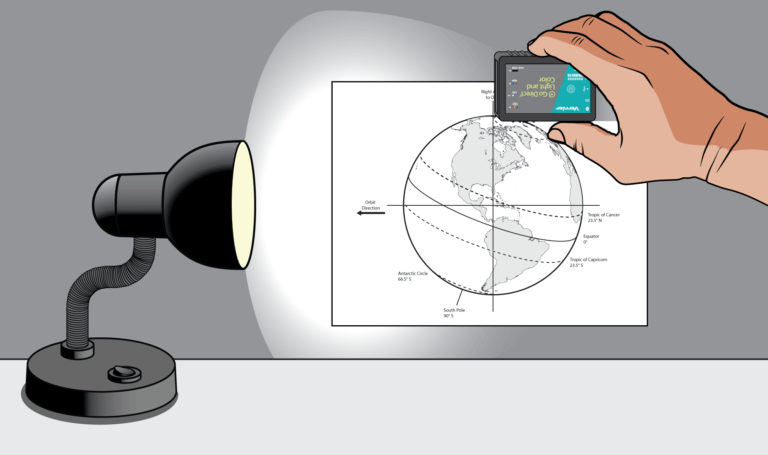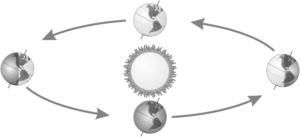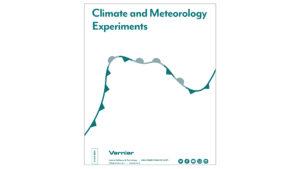
Introduction
The sun emits energy in the form of solar radiation, which is made up of ultraviolet light, visible light, and infrared radiation. Solar radiation has a profound effect on life on Earth. For example, solar radiation is transformed into usable energy for living things by photosynthesis. However, solar radiation is not evenly distributed across the Earth.
Insolation is the amount of solar radiation that strikes a specific location on Earth, and it varies from place to place. The tilt of the Earth’s axis and the curvature of the Earth cause the angle of insolation, the angle at which solar radiation hits the Earth, to vary across the planet. This affects heating in two different ways:
- The angle of insolation affects the amount of atmosphere that the solar radiation travels through before reaching the surface. As a result, near the equator, sunlight travels through less atmosphere compared to polar regions.
- The angle of insolation also influences the amount of area that is heated by solar radiation. Solar radiation is distributed over a smaller surface area in the tropical regions because it hits it at an angle that is closer to perpendicular, while in the polar regions it is distributed over a much larger surface area because solar radiation hits the polar regions at an oblique angle.

As the Earth orbits around the sun, it travels in an oblong path rather than a perfect circle, so the planet is closer to the sun at some times during the year compared to others as seen in Figure 1. It is a common misconception that this change in distance is the cause of the seasons. However, because Earth is so far from the sun, this difference has a relatively small effect on the temperature you experience when you’re sitting outside. In reality, because the Earth is tilted, the North Pole points toward the sun during some parts of the year and the South Pole points toward the sun during the rest of the year. Thus, it is the angle of insolation and the orbit of the Earth around the sun that cause the seasons.
While conceptually this information probably makes sense to you, in this experiment, you will collect data that you will use as evidence to describe what causes the seasons.
Objectives
- Use a light sensor to model the amount of light that reaches different latitudes.
- Determine the relationship between the amount of light and latitude.
Sensors and Equipment
This experiment features the following sensors and equipment. Additional equipment may be required.
Ready to Experiment?
Ask an Expert
Get answers to your questions about how to teach this experiment with our support team.
- Call toll-free: 888-837-6437
- Chat with Us
- Email support@vernier.com
Purchase the Lab Book
This experiment is #1 of Climate and Meteorology Experiments. The experiment in the book includes student instructions as well as instructor information for set up, helpful hints, and sample graphs and data.


